Z77 mITX Round-Up: Five of the Best – MSI, Zotac, ASRock, EVGA and ASUS
by Ian Cutress on December 31, 2012 7:00 AM EST- Posted in
- Motherboards
- MSI
- ASRock
- EVGA
- ZOTAC
- Asus
- Ivy Bridge
- Z77
- mITX
ASRock Z77E-ITX In The Box
When I reviewed the ASRock P67 Extreme4 in January 2011, for ~$150 we got an amazing box bundle – SATA cables, molex to SATA power cables, SLI bridges, a front USB 3.0 panel, a rear USB 3.0 bracket and a floppy drive cable. Almost nothing I have reviewed since has ever come close in terms of value or sheer amount (the ASUS ROG motherboards and an EVGA Z77 box have been similar). So when I see a smaller motherboard on offer for around the same price, part of me is secretly hoping that the box contents match that of the P67 I reviewed all that time ago.
In the box we get:
Manuals
Rear IO Shield
Driver CD
Two SATA Cables
WiFi Antenna with Stand
DVI-I to D-Sub Adapter
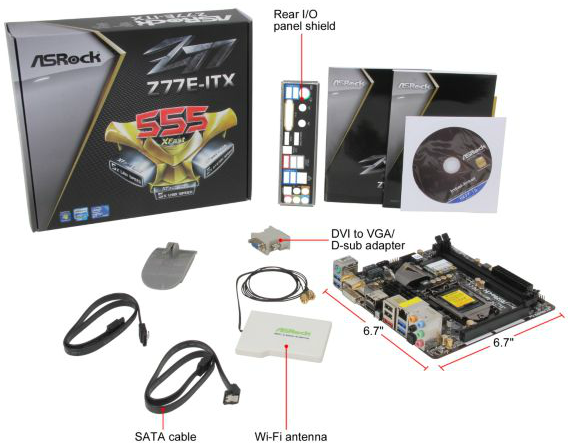
While there is not much in the box compared to those early days, I am glad to see an included DVI to D-Sub adaptor given the DVI-I onboard. The WiFi antenna is a different to the norm – typically in these packages we get a single pair of antennas, but ASRock have decided to mount them into a small plastic device at a near 90º angle for better multi-directional coverage.
ASRock Z77E-ITX Software
For a number of motherboards and motherboard packages, ASRock have stuck to their guns on the software package they include with the product. The main philosophy behind their software package is plastered over the motherboard box itself in the form of the ‘XFast 555’ methodology. This relates to the main three parts of the software – XFast USB, XFast LAN and XFast RAM, each of which we will go through. ASRock claims that each element of the software can increase performance by 5x (hence the 555 nomenclature), however the benchmarks are cherry picked to show a performance gain, and it is arguable if those benchmarks are relevant in a real world context.
The driver install disk is very good – we get a one button option to install the drivers or pick the drivers we want. Other specific software is included in this ‘install all’, like Google Chrome and an anti-virus (this anti-virus software is part of a bundling package with a particular virus scan company, which I disable for the purposes of testing). Other utilities can be installed on a case-by-case basis in the Utilities menu:
Both the XFast USB and XFast LAN utilities on the disk are actually licensed versions of other software but with an ASRock skin. For example, the XFast LAN software is a skinned version of cFosSpeed (http://www.cfos.de/en/cfosspeed/cfosspeed.htm), which normally costs 15.90 Euro. ASRock clearly get it on a bulk licensing deal in order to pass savings onto the user.
XFast USB
The waters of XFast USB have been muddied with the integration of Windows 8. Simply put, there are multiple ways to talk (protocols) to a USB device, depending on whether the one doing the talking and the USB device supports the protocols. For Windows 7 there are three main protocols to choose from – normal (from the Windows Drivers), BOT (Bulk Only Transfer, increases speed at the expense of latency) and UASP (USB Attached SCSI Protocol). In all usual situations, the normal protocol has priority as it works in any configuration with any device. The BOT protocol can be achieved by injecting a different driver into the system (this is what XFast USB does) which gives better peak transfer rates by reducing the overhead in talking to the device. UASP is used by ASUS to get better speeds for low transfer sizes – sometimes up to two orders of magnitude better than normal or BOT protocols.
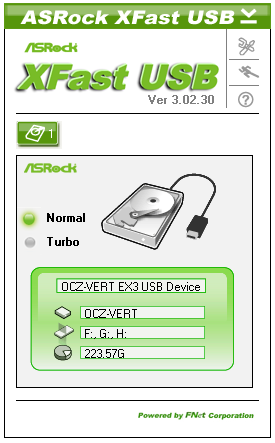
When I say the waters have been muddied, it means that Windows 8 automatically implements UASP on any device that can support it on any USB 3.0 port. This makes software like XFast USB on ASRock and the ASUS UASP null except on Window 7 systems. If Windows 7 is here to stay until Windows 9, then elements like XFast USB will still be included in software packages.
XFast LAN
In my home user experience, there has never been much of a need to monitor and adjust how a machine communicates with the internet. Living with a substantial broadband speed helps, but even as a student there was no software way of stopping someone abusing the internet of the house without setting up an ICS type system and implementing something like XFast LAN, assuming the ICS could interpret what each machine was doing. XFast LAN is the ASRock skinned version of cFosSpeed, and allows users to monitor as well as prioritize certain programs over others for network usage. Thus when gaming and downloading, the game can have priority, or using VOIP over gaming, the VOIP gets ahead of the stack for gaming.
This software is designed to work with any outgoing network implementation – either Realtek, Intel, Atheros, or a WiFi connection. The downside of software usually consumes some CPU cycles rather than gunning for a NIC with routing options part of the specification, such as Intel server NICs.
ASRock eXtreme Tuning Utility (AXTU)
AXTU has been a part of the ASRock package since before I starting reviewing their motherboards, and not a lot has changed since the inception. Most manufacturers have an interface for overclock settings and fan controls, and for ASRock, this is AXTU. Over the months and chipset generations, a couple of new features have been added on to the default framework – Intelligent Energy Saver and XFast RAM.
The Hardware Monitor for AXTU does a similar job to the HW Monitor in the BIOS – we get lists of speeds, temperatures and voltages.
Fan control is also similar to the BIOS options, giving the CPU fan and the chassis fan options to set a target temperature then a target speed (from Level 1 to Level 10 which makes little sense). It would not be too hard to offer a multi-scale graphing system so users can accurately change the fan speed in relation to temperature, given that ASRock have control over what PWM value they set for each fan header.
XFast RAM is part of the 555 software package, although it simply is a glorified RAM Disk generator with some simple options for adjusting temporary files to the RAM Disk. There are situations where this is useful – making 16 GB RAMdisk if you have 64 GB of memory could provide the perfect solution in the read/write speeds of your array are the limiting factor in production. However this is not a perfect scenario in a mITX build unless some higher density non-ECC memory comes into the mainstream.



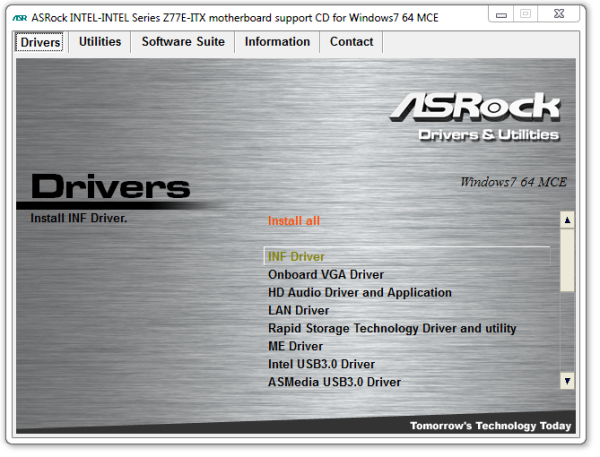
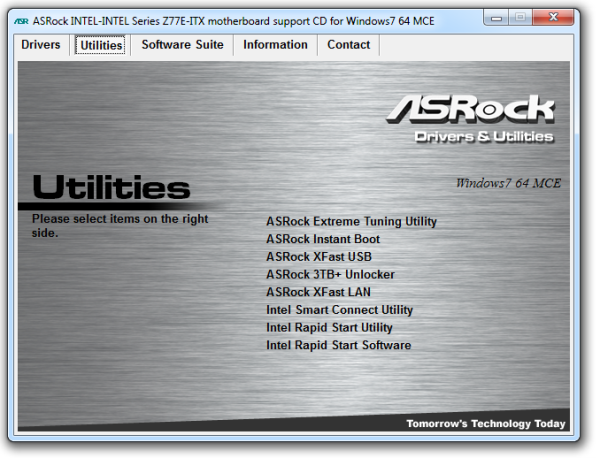
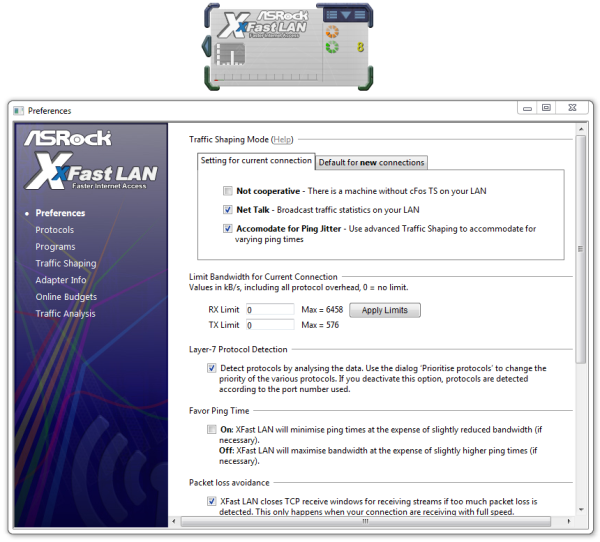
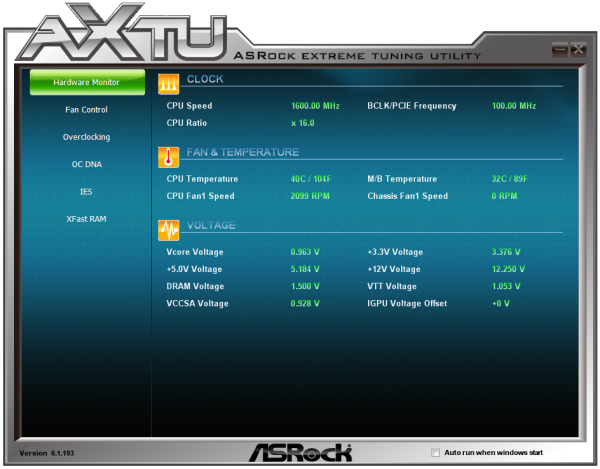
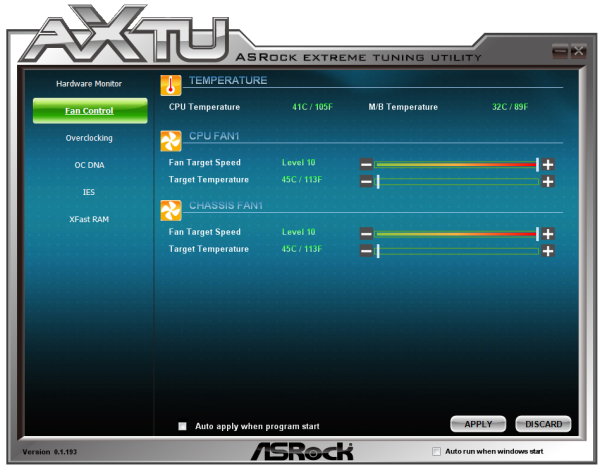















54 Comments
View All Comments
Sabresiberian - Tuesday, January 1, 2013 - link
Thanks for the great comparison review!It looks like there is a little mistake in the spec list for the Asus board, which shows it having a mini-PCIe connector. I would love it if it did, but I didn't see it on the board and it isn't mentioned in other spec lists.
It is important to me because I would ideally need connection for both a graphics card and a sound card (which I believe I could do through a mini-PCIe to PCIe x1 adapter if needed). This makes the EVGA Stinger the choice for me here, though the Asus board is the one I would prefer to buy.
I am truthfully a little disappointed in the EVGA board, which seems all too common with EVGA products in general these days. Great support is still there, but I'd rather they build bleeding edge components and not have to find out whether or not their support is as good as people say it is. The Stinger is a good board to be sure, and the Intel LAN alone puts it in the category of "will buy" for me, but I was hoping it would be something that would match or beat the Asus P877-I, and it just doesn't.
Foeketijn - Tuesday, January 1, 2013 - link
When you take overclocking out of the equation, B75 has it all, for the price just a tiny bit north of the old H61 chipset. Support for IB features (1600Mhz DDR3, PCI-e 3.0), Native Sata III, USB 3.0.It wasn't intended for the DIY market but fits the bill perfectly in my opinion. Only the very very few who need to OC, +16Gb ram or multiple SSD's @ full 6 Gb/s need the Z77 chipset.
The only thing is, that us mere mortals can't predict is, if a much cheaper chipset is used, did the OEM also cheapskate on the critical parts to? I would love to see some in-depth component analysis which I see for example, when a PSU is taken apart.
Which components are used? how well is the soldering done, does it still work at a sauna lanparty, etc.
I might be alone in this, but I would find that much more valuable information than all the performance benchmarks together (race to the bottom, be dammed!).
Including the northbridge in the CPU made motherboard and CPU reviews so predictible (or borring).Since then, I'm only interested in stability, ease of installation (nicely covered) and practical use (fan controll, MEM compatibility ect).
<offtopic> Oh I loved the XP-m 2500+ siverpainting 2001 era where you actually could get a noticeable improvement of performance and not necessarily have to sacrifice stability or risk bankruptcy</offtopic>
vanwazltoff - Tuesday, January 1, 2013 - link
i picked up an asus p8z77-i deluxe/wd before christmas and made a beast gaming computer out of it with an i5-3750k OCed to 4.5ghz and a gtx670 =]vanwazltoff - Tuesday, January 1, 2013 - link
*3570kBeaver M. - Tuesday, January 1, 2013 - link
Loved the POST screen measurements and the DPC latency testing. Something you dont see every day. Actually Ive never seen it, and yet I always wanted to know those.However I am not really interested in the Z77s, since they have a horrible layout for my needs. Only the Asus one comes close to what I need, but I just dont buy Asus anymore because of several very bas experiences.
So, I wish you would also test the B75 and H77s.
paksoy - Tuesday, January 1, 2013 - link
I love the features of this Asus mobo, but i want to use it in a really small form factor case like the Antec ISK 110 VESA Case.http://www.anandtech.com/show/6192/antec-isk-110-v...
I'm just worried that the height of the VRAM board would prevent it from using it with this case.
mi1stormilst - Tuesday, January 1, 2013 - link
I still opted for the Gigabyte Z77N and love it...Sivar - Wednesday, January 2, 2013 - link
Does this refer to the ALC889 playing an audio file encoded at 192KHz?If so, does it really matter? Failing a test is never a good thing, but I know of no widely available 192KHz audio source, and such a source would have no benefit, nor would a 96KHz source.
cjs150 - Wednesday, January 2, 2013 - link
I am a happy user of the AS Rock board in a silent HTPC. It works exceptionally well. However it is clear that some work still needs to be done on motherboard design.MSata on back is excellent - now can we have it as SATA 3 because the better MSata SSDs are all Sata 3.
Placement of Sata connectors is often awkward on these boards. On edge and at right angles please.
Similarly I would love it if someone either did the 24 pin ATX power connector at right angles or someone manufactured a right angled converter that did not require de soldering the motherboard connector. Cable management in Mini-OTX is very hard and that would really help.
Finally, careful choice of RAM can eliminate issues Ian had about the closeness of the CPU socket preventing the use of many after market coolers. I use the Samsung green low profie memory, which is so low that any after market cooler can be used (and runs at 1.35v, is an unbelievably good overclocker and reasonably priced!)
romrunning - Wednesday, January 2, 2013 - link
As has been mentioned previously, the H77 chipset is great for those who do not need overclocking. I've used the Intel DH77DF, and I heartily recommend it. Since the DH77DF has an eSATA port (not too common), I've even been able to keep an eSATA dock that I used before USB 3.0 was more readily available. If you install this board into a Fractal Design Node 304 case, you can use all of the SATA ports as well. I've used it with a Silverstone SG05 case, and the loudest part of my setup is the fan on the graphics card (Radeon 7850).One thing I've noticed, though, is the relatively low mic input from the front audio. Not sure if this is common to the Realtek ALC8xx chip series, but even after boosting the gain in Win7 to +30db, it still isn't quite as loud as an older AMD board I previously had (which didn't need a boost at all).